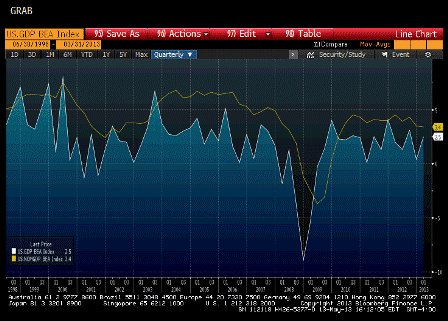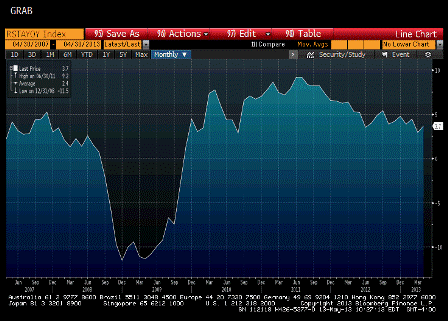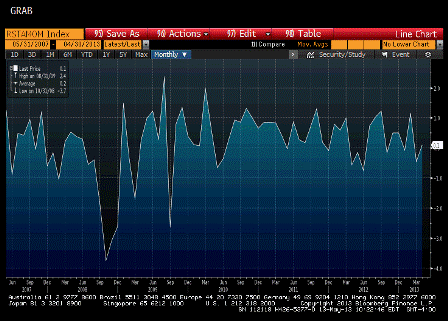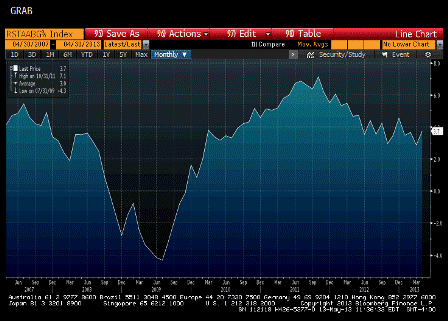You can see on the chart that year over year the growth in nominal GDP- actual dollars spent- slowed in Q1 2013 from Q4 2012, while ‘real’, price adjusted spending went up.
That is, dollars spent grew at a slower rate while the goods and services purchased grew at a higher rate, all because of year over year changes in prices.
And note that the rate of nominal growth seems to have been modestly decelerating for the last several years as well.
No sign of any ‘run away money printing’ here…
;)
Karim writes:
Lower commodity prices unequivocally positive for U.S. consumers.
Yes, agreed, lower prices in fact help consumers offset the lower rate of nominal income growth.
And yes, the Fed is concerned about the output gap which is real GDP.
And also price stability, as a secondary policy mandate…
;)

Full size image




